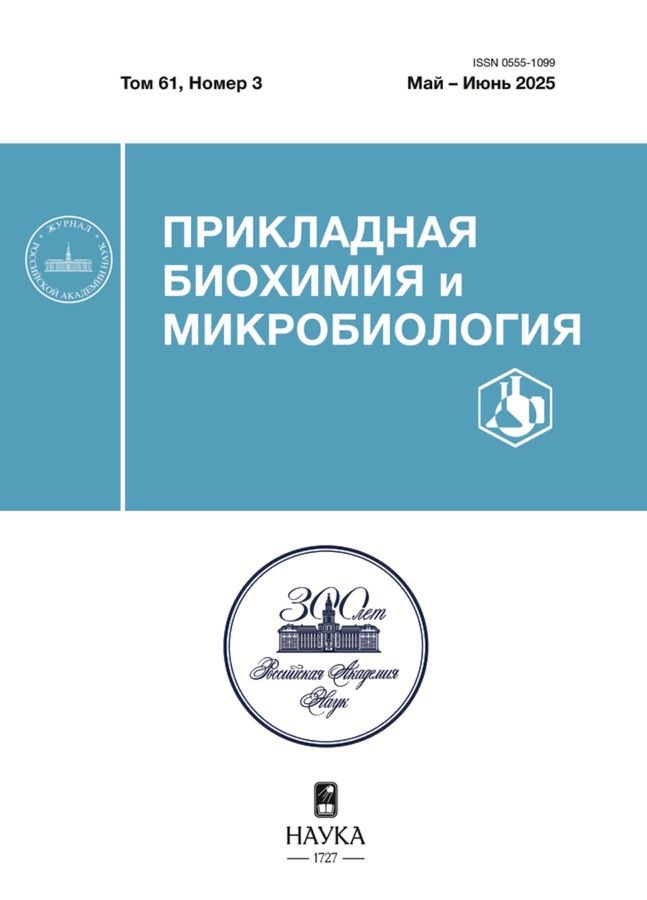Получение хитозана из хитинсодержащего сырья Узбекистана и исследование антимикробных свойств
- Авторы: Милушева Р.Ю.1, Ахымбетова Г.Д.1, Рашидова С.Ш.1
-
Учреждения:
- Институт химии и физики полимеров АН Республики Узбекистан
- Выпуск: Том 60, № 2 (2024)
- Страницы: 167-176
- Раздел: Статьи
- URL: https://cardiosomatics.ru/0555-1099/article/view/674565
- DOI: https://doi.org/10.31857/S0555109924020063
- EDN: https://elibrary.ru/GAGJUR
- ID: 674565
Цитировать
Полный текст
Аннотация
Из отходов производства шелка выделен хитозан Bombyx mori, охарактеризован его химический состав, определена молекулярная масса и степень деацетилирования хитозана, исследованы антибактериальные и иммунологические свойства. Выявлено, что хитин и хитозан обладали антибактериальной активностью по отношению к Staphylococcus aureus, S. epidermidis, S. saprophyticus, Bacillus subtilis. Хитозан B. mori обладал также способностью увеличивать иммунный отклик живой системы: повышал число клеток как в центральных (тимус, костный мозг), так и в периферических (лимфатические узлы) органах иммунитета у мышей. Впервые получен хитозан из гидробионтов Аральского моря — цист Artemia parthenogenetica, исследован его состав и основные физико-химические характеристики. ИК-спектроскопические и рентгенологические исследования хитозана из цист Artemia parthenogenetia показали его чистоту. Определена молекулярная масса — 89 кДа и растворимость — 81.62%.
Полный текст
Об авторах
Р. Ю. Милушева
Институт химии и физики полимеров АН Республики Узбекистан
Email: rumilusheva@gmail.com
Узбекистан, 100128, Ташкент
Г. Д. Ахымбетова
Институт химии и физики полимеров АН Республики Узбекистан
Email: rumilusheva@gmail.com
Узбекистан, 100128, Ташкент
С. Ш. Рашидова
Институт химии и физики полимеров АН Республики Узбекистан
Автор, ответственный за переписку.
Email: rumilusheva@gmail.com
Узбекистан, 100128, Ташкент
Список литературы
- Хитозан / Под ред. К. Г. Скрябин, С. Н. Михайлов, В. П. Варламов. М.: Центр Биоинженерия РАН, 2013. 593 с.
- Caracciolo G., Vali H., Moore A., Mahmoudi M. // Nano Today. 2019. V. 27. № 6. P. 10. https://doi.org/10.1016/j.nantod.2019.06.001
- Sheik S., Nagaraja G. K.; Chandrashekar K. R. // Mater. Today Proc. 2018. V. 5. № 10. P. 21011–21017.
- Wang W., Meng Q., Li Q., Liu J., Zhou M., Jin Z., Zhao K. // Int. J. Mol. Sci. 2020. V. 21. № 2. P. 487. https://doi.org/10.3390/ijms21020487
- Belbekhouche S., Bousserrhine N., Alphonse V., Le Floch F., Charif Mechiche Y., Menidjel I., Carbonnier B. // Colloids Surf. B. 2019. V. 181. P. 158–165.
- Le-Vinh B., Minh N., Le N., Nazir I., Matuszczak B., Bernkop-Schnürch A. // Int. J. Biol. Macromol. 2019. V. 133. P. 647–655. https://doi.org/10.1016/j.ijbiomac.2019.04.081
- Wang W., Meng Q., Li Q., Liu J., Zhou M., Jin Z., Zhao K. // Int. J. Mol. Sci. 2020. V. 21. P. 487. https://doi.org/10.3390/ijms21020487
- Рашидова С. Ш., Милушева Р. Ю. Хитин и хитозан Bombyx mori. Синтез, свойства и применение. Ташкент: ФАН, 2009. 246 c.
- Милушева Р. Ю., Авазова О. Б., Рашидова С. Ш. Белок из куколок тутового шелкопряда Bombyx mori L. Выделение, свойства, применение. Ташкент: ФАН, 2020. 216 c.
- Mirabdullayev I., Abdullaeva L., Musaev A., Zholdasova I., Mustafaeva Z., Jumaniezova N. // Geophysical Research Ab-stracts. 2007. V. 9. P. 772.
- Aladin N. V., Plotnikov I. S. // Proceedings of the Zoological Institute RAS. 2008. V. 312 № 1–2. Р. 145–154.
- Rudneva I. I. Artemia/Prospects for Use in the National Economy. Kiev: Naukova Dumka, 1991. C. 6–23.
- Ravikumar N. V. // Reactive and Functional Polymers. 2000. V. 46. P. 1–27.
- Muzzarelli R. A.A. The Discovery of Chitin. In: Chitosan in Pharmacy and Chemistry / Ed. R.A.A Muzzarelli, C. Muzzarelli. Italy: Atec., 2002. P. 1–8.
- Милушева Р. Ю., Пирниязов К. К., Рашидова С. Ш. //Вестник Тверского гос. ун-та. Серия: Химия. 2016. № 2. C.119–124.
- Gamzazade A. I., Shlimak B. M., Sklyar A. M., Stykova E. V., Pavlova S. A., Rogozin S. V. // Acta. Polym. 1985. V. 36. № 8. Р. 421–424.
- Погодина Н. В., Павлов Г. М., Бунин С. В., Меньшиков А. В. // Высокомолек. cоединения. 1986. № 28. С. 232–239.
- Государственная фармакопея СССР. 2012. XI. M: Медицина, Т. 2. С. 24.
- Государственная фармакопея СССР. 1987. XI. М: Медицина, Т. 1. С. 175.
- Климова В. А. Основные микрометоды анализа органических соединений. Москва: Химия, 2001. 75 с.
- Литвиненко Л. И., Бойко Е. Г. // Биология внутренних вод. 2008. № 1. С. 40–48.
- Bansal V., Sharma P. K., Sharma N. // Adv. Biol. Res. 2011. V. 5. № 1. P. 28–37.
- Rinaudo M. // Progress in Polymer Science. 2006. V. 31. Р. 603–632.
- Kumar M. R., Muzzarelli R. A. A., Muzzarelli C., Sashiva H., Domb A. J. // Chemical Reviews. 2004. V. 104. Р. 6017‒6084.
- Югай С. М., Шахобутдинов С. Ш., Атаханов А. А., Рашидова С. Ш. // Химический журнал Казахстана. 2019. Т. 67. № 3. С. 254–265.
- Хажибаев К. Г. Бердимбетова Г. Е., Карлыбаева Б. П., Ощепкова Ю. И. // Universum: химия и биология: электрон. научн. журн. 2019. № 9. С. 63. http://7universum.com/ru/nature/archive/item/7769
- Ильина А. В., Варламов В. П., Ермаков Ю. А. // Докл. Академии наук. 2008. Т. 421. № 2. С. 199–201.
- Chen Y. M., Chung Y. C., Wang L. W., Chen K. T., Li S. Y. // J. Environ. Sci. Health A. 2002. V. 37. Р. 1379.














